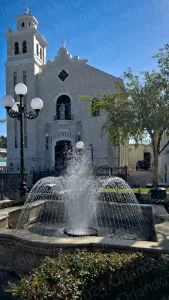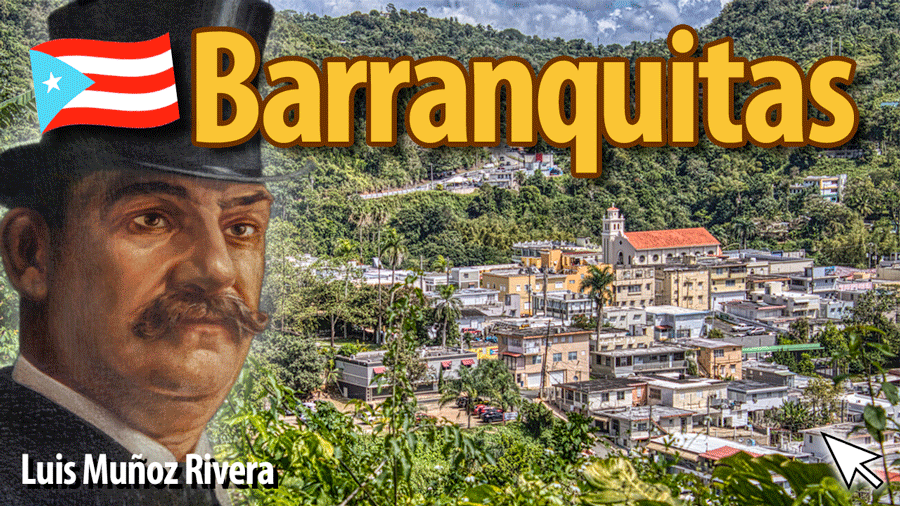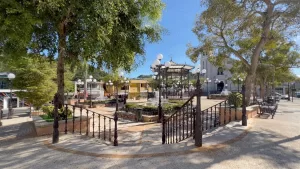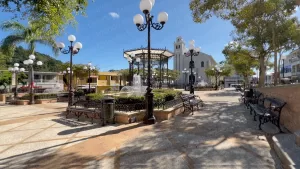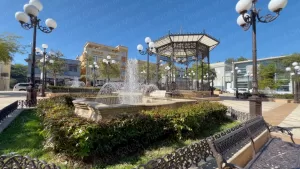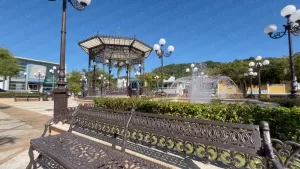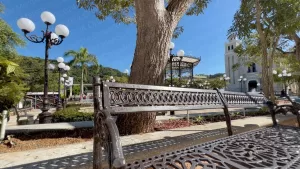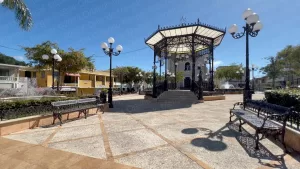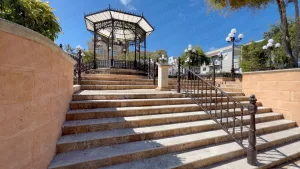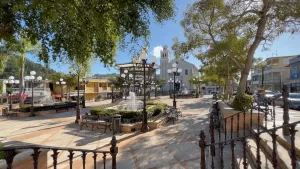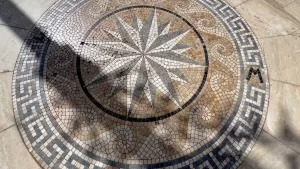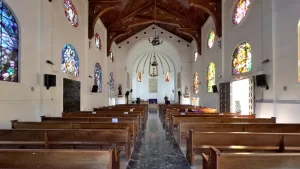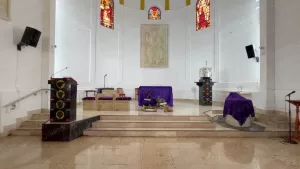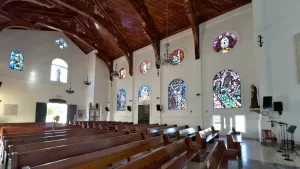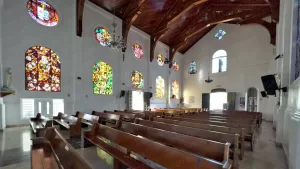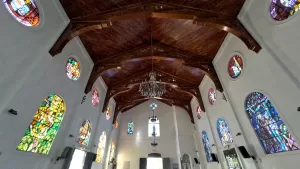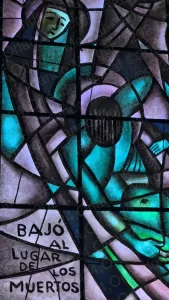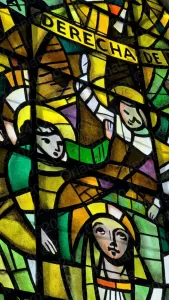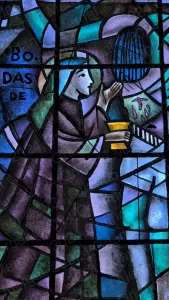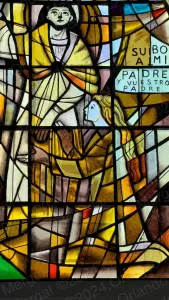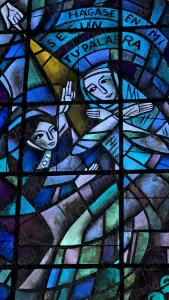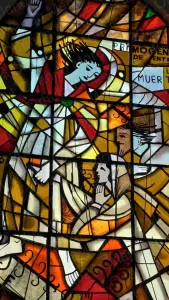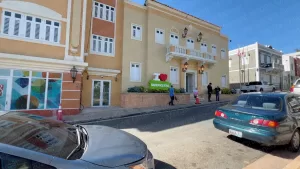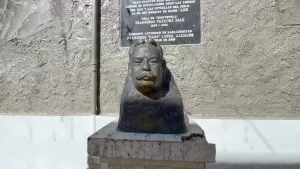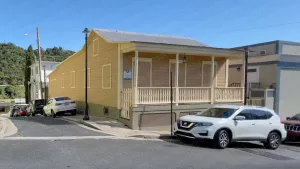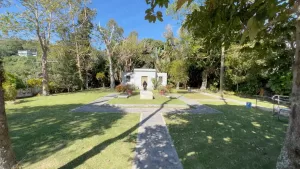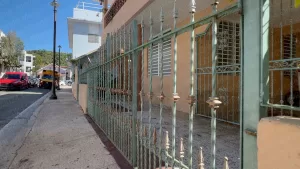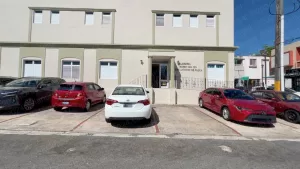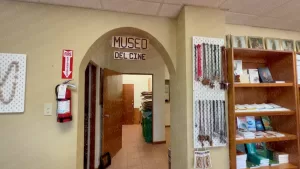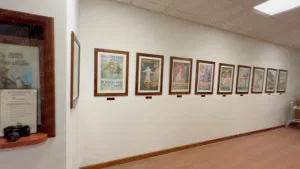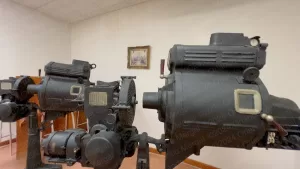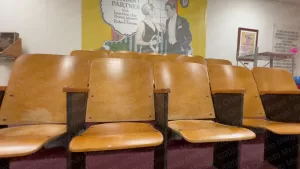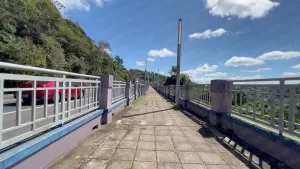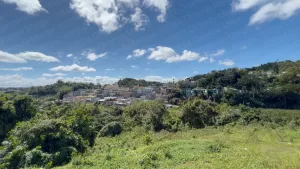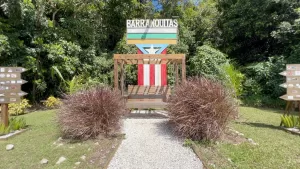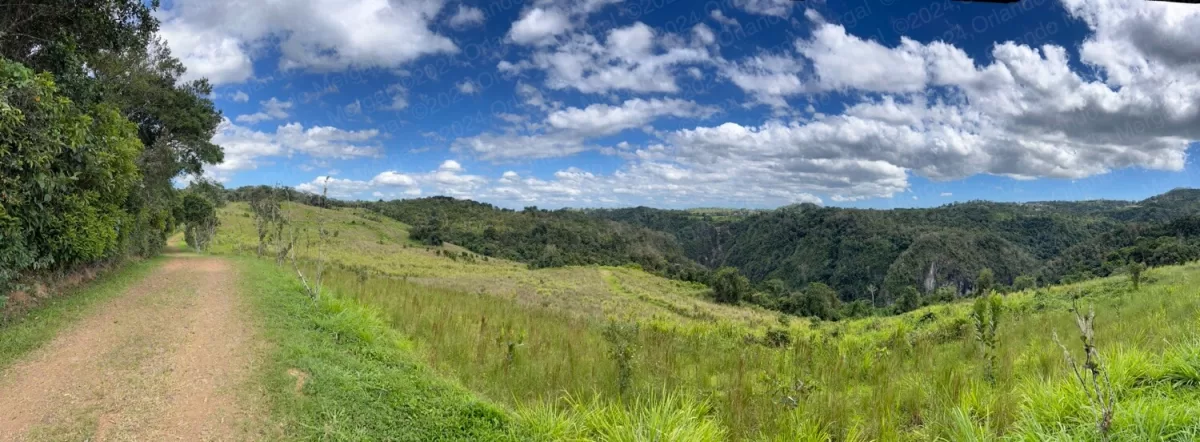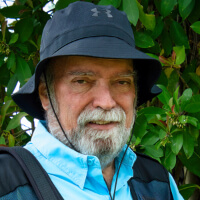This week my wife and I visited the town of Barranquitas, Puerto Rico. It’s a small town that sits almost at the geographical center of the main Island of Puerto Rico.
As you will recall from several of my previous posts, Puerto Rico is a group of islands but it’s not an archipelago. How can that be possible? Aren’t they both the same thing? Well, actually they’re not, because in this case the archipelago is the Caribbean and Puerto Rico is a subset of islands within that larger group. Make sense?
In any case, Puerto Rico is a group of islands comprised of the larger island and several smaller ones that include: Vieques, Culebra and Culebrita to the east, Mona, Monito and Desecheo to the west, Caja de Muerto to the south and several other smaller islands and islets. All this is to say that Barranquitas is almost at the geographical center of that larger island that we regularly refer to as Puerto Rico.
Driving to Barranquitas is easy and hard at the same time. Just punch in the coordinates for the main square into any GPS (you can find them in the map below) and you’ll arrive there in a little over an hour. That’s the easy part. The hard part is all the curves and climbing that you’ll have to drive through to get there. It’s straight uphill as soon as you leave the city of Bayamón.
Barranquitas was one of those towns that I had never visited in my life. There are several others on the Island, even though I’ve lived here since 1963. It’s just that I never had a reason to go there. In any case, my wife and I hopped in our SUV and took off early in the morning of March 5th.
Click on image to watch the video
We arrived at the Barranquitas Bicentennial Square at 8:47am. Some of you have asked how I always know exactly the time at which we arrive at each destination. And the answer is simple. It’s the timestamp that’s on the first video that I shoot in the morning. That’s how I know.
The Barranquitas Bicentennial Square (or Plaza Bicentenaria de Barranquitas) is simply stunning. It’s looks like you’re somewhere in France or Italy, with elaborate ironwork, statues, fountains, tiling, beautiful street lamps and a marvelous gazebo in the center. Add to that the wonderful Saint Anthony of Padua Parish in the background and you have a picture perfect scene that’s unmatched anywhere else in Puerto Rico.
The Barranquitas Bicentennial Square actually has two names. It’s also called the “Monsignor Miguel A. Mendoza Square”, honoring the town’s beloved parish priest who died back in 2002.
- Barranquitas Bicentennial Square
(click on image to see it larger)
- Barranquitas Bicentennial Square
(click on image to see it larger)
- Barranquitas Bicentennial Square
(click on image to see it larger)
- Barranquitas Bicentennial Square
(click on image to see it larger)
- Barranquitas Bicentennial Square
(click on image to see it larger)
- Barranquitas Bicentennial Square
(click on image to see it larger)
- Barranquitas Bicentennial Square
(click on image to see it larger)
- Barranquitas Bicentennial Square
(click on image to see it larger)
Most squares in Puerto Rico serve a practical purpose. They’re a place to sit, relax and do some people watching. But not the Barranquitas Bicentennial Square. It’s much more than that. Of course, you have beautiful benches and trees to protect you from the blistering Puerto Rican sun. But they’re not every-day benches. They’re works of art. And so it goes on with every little detail of this wonderful place.
Underneath the gazebo there’s a time capsule, containing documents about the town’s first 200 years, that was buried there on the town’s 200th anniversary and will be disinterred on its 250th birthday. I didn’t learn this from any document on the Internet or otherwise, I actually learned it from a local policeman who was watching over the plaza.
On the east side of the square you have the beautiful Saint Anthony of Padua Parish (or Parroquia San Antonio De Padua) that looks old and magnificent but it’s actually quite new. So why is it that it looks old but it’s actually not? Well, as it it turns out, this temple hasn’t had too much luck with the Island’s hurricanes.
The original structure was built between 1804 and 1809. If the present building were that one, it would be considered old. But it’s not! The original structure was destroyed by hurricane Santa Ana in 1825. just fourteen years after it was finished. The second and third versions of the temple were destroyed in 1876 and 1928 by hurricanes San Felipe and San Felipe II respectively. So the one that you see today is actually the fourth attempt, inaugurated in 1933 and remodeled in 1980.
And, as a side note, it seems like they finally got it right, because this one resisted hurricane María back in 2017, which has been the nastiest storm to ever hit the Island.
- Saint Anthony of Padua Parish
(click on image to see it larger)
- Saint Anthony of Padua Parish
(click on image to see it larger)
- Saint Anthony of Padua Parish
(click on image to see it larger)
- Saint Anthony of Padua Parish
(click on image to see it larger)
- Saint Anthony of Padua Parish
(click on image to see it larger)
Saint Anthony of Padua Parish isn’t lavish at all, but it has that old world charm that’s both relaxing and inviting. My favorite thing about it is that it’s bright, due to the wonderful stained glass windows that grace every wall. This is important because some temples can seem musty, dark and uninviting. The woodwork on the temple’s vaulted ceilings is probably one of the things that most leads you to believe that the building is centuries old. The altar is austere and simple and the floors are just perfect.
- Saint Anthony of Padua Parish
(click on image to see it larger)
- Saint Anthony of Padua Parish
(click on image to see it larger)
- Saint Anthony of Padua Parish
(click on image to see it larger)
- Saint Anthony of Padua Parish
(click on image to see it larger)
- Saint Anthony of Padua Parish
(click on image to see it larger)
- Saint Anthony of Padua Parish
(click on image to see it larger)
- Saint Anthony of Padua Parish
(click on image to see it larger)
Another thing that was quite surprising were the beautiful stained glass windows, that look like they’ve been hanging there for centuries and were actually brought from Columbia back in the 1980’s. Without them the temple wouldn’t be quite as charming. They’re the ones that lend that brightness that I love so much!
As we left Saint Anthony of Padua Parish we walked across Barranquitas Bicentennial Square to City Hall, which sits at the southwest corner of the plaza. Our hope was to obtain information about the town that we could later use to write our video script as well as this article. From City Hall we were directed to the town’s Tourism office across the square at the northwest corner.
When we got to the Tourism office we met with a lady who was both nice and unable to help us. I mean, her heart was in the right place and she did everything that she could to help us. But she had nothing to hand out to us. She even promised to look for information that she could forward to us if we would only leave her our business card. But the fact remains that she never did.
As we left the Tourism office we walked up Padre Rivera street and turned west on road 162 towards the Luis Muñoz Rivera House Museum. There’s a bust of Muñoz Rivera at the corner of Road 162 and Padre Rivera street. It’s a small plaza that sits on the west side of City Hall.
Luis Muñoz Rivera was born in Barranquitas on July 27, 1859 during the last century of Puerto Rico’s Spanish colonial era. He was a poet, journalist and politician who was instrumental in Puerto Rico’s struggle for autonomy from Spain.
He was also Puerto Rico’s second resident commissioner between 1911 and 1916, after Federico Degetau, who we covered during our visit to the neighboring town of Aibonito. During his tenure he struggled to obtain an autonomous status for the Island under American rule as the one he strived for under Spanish rule.
That status was granted a year after his death, under the Jones–Shafroth Act of 1917 (granting Puerto Ricans American citizenship). The Law was signed on March 2,1917 —a month before the US declared war on Germany on April 1917. Two months later, The US Congress enacted the Selective Service Act of 1917 (a compulsory enlistment) that eventually make all Puerto Rican men between the 18 to 45 elegible for the draft. Approximate 20,000 Puerto Ricans served in World War I. Coincidence? You tell me.
But our home town hero’s story doesn’t end there. He was also father to Luis Muñoz Marín, who was actually born of Fortaleza Street in Old San Juan and became the first island-born Puerto Rican to be elected governor of Puerto Rico in 1948.
Muñoz Marín and his newly formed Popular Democratic Party governed Puerto Rico during 28 consecutive years and transformed the Island from “the poor house of the Caribbean” into an industrial powerhouse. We covered Muñoz Marín in the second article of this series dedicated to the town of Trujillo Alto.
The Muñoz Rivera House Museum must be full to the brim with documents and memorabilia honoring the life of tis illustrious Puerto Rican. But sadly, we couldn’t see them, because the museum was closed.
Now remember, we visited Barranquitas on the morning of March 5th. That was a Tuesday.
There was a sign next to the door saying that museum hours were Tuesdays thru Sundays, from 8:30am to 4:30pm. Yet there we were, at 9:54, and the place was closed.
So what did we do? Well, our first thought was “maybe the lady at the tourism office knows when it will be open”. So we returned to the tourism office, only to learn that the lady had no idea who was supposed to be at the museum or if we could expect him/her at all.
So off we went, once again, up Padre Rivera street, turned west at road 162, passed in front of the Muñoz Rivera House Museum and turned left at the corner of road 162 and road 756. There we turned south, passed several houses and reached the Muñoz Rivera Mausoleum on the right hand side.
The Muñoz Rivera Mausoleum is a public monument were you’ll find the tombs of Luis Muñoz Rivera, his wife Amalia Marín Castilla, his son Luis Muñoz Marín and his daughter-in-law Inés María Mendoza. Sadly, that too was closed. So we shot some footage for our video and headed for our car.
Along the way I couldn’t help noticing the elaborate ironwork that seems to be everywhere in Barranquitas. And I’m not talking only about the Barranquitas Bicentennial Square. I’m talking about regular everyday houses. Not expensive houses, but just plain Jane houses. Beautiful ornamental ironwork simply seems to be “a thing” in this little town.
As we approached our SUV we noticed a small museum across the street. It’s actually on the northeast corner of the Saint Anthony Of Padua building, which is actually the rear of the building. There’s a small gift shop there, with church-related merchandize, and a small museum at the end dedicated to the world of movies.
So what’s the connection. Well, as it turns out, many years ago that corner of the Saint Anthony Of Padua building used to be a movie theater. You’ll find all sorts of interesting memorabilia there, including: the original projectors (which look like you could turn them on and they would actually work), various original seats, and a collection of movie posters from the 1930’s, 40’s and 50’s.
- Saint Anthony Of Padua Movie House
(click on image to see it larger)
- Saint Anthony Of Padua Movie House
(click on image to see it larger)
- Saint Anthony Of Padua Movie House
(click on image to see it larger)
- Saint Anthony Of Padua Movie House
(click on image to see it larger)
- Saint Anthony Of Padua Movie House
(click on image to see it larger)
Many people would pass on this one, but if you’re a movie buff like me you’ll find it interesting. Besides, it’s free. So what’s the harm in dedicating it 10 minutes of your time?
There were still a couple of places left that we wanted to visit, so we decided to head for the outskirts of town. Our first stop was at the “Barranquitas Linear Walk” or “Paseo Lineal de Barranquitas”. Like everything else we were only able to find tidbits of information here and there that didn’t actually say much. So I’ll tell you what we observed.
The only figure, that I did find, stated that the walk was 466 meters long. But that would be .29 miles , according to my math, and I know for a fact that it’s much longer than that.
The walk borders a ravine that goes down to the Barranquitas river. On the other side you have the town of Barranquitas. Needles to say, the commanding view of the town alone is worth the trip.
Then there’s the walk itself, where people exercise during mornings and evenings while they take in the view and the fresh air. Admittedly, the area does need some cleaning and a fresh coat of paint, but we’ll blame that on hurricane María like the rest of Puerto Rico’s woes.
Across the street you have the “Barranquitas Swing” or “El Columpio de Barranquitas”, where you can make that wonderful selfie to send friends and family back home.
As we left “the swing” we headed further into the Barranquitas countryside in search of “El Cortijo”, an old hacienda with a castle-like structure that appears on the Internet as one of Barranquitas’ top attractions. Well, just because it’s on the Internet it doesn’t have to be true”, because all we could see of “El Cortijo” was a closed gate.
We did however capture a beautiful view of the town of Barranquitas that became the thumbnail for our video. So I guess the trip wasn’t a total waste of time.
Finally, there’s one place left in Barranquitas that we haven’t mentioned. I’m talking about the San Cristóbal Canyon or “El Cañón de San Cristóbal”. It sits between the town of Barranquitas and the neighboring town of Aibonito and I covered it when we visited that town.
The San Cristóbal Canyon is the largest and deepest canyon in the Caribbean and at its deepest point has a vertical drop of 800 feet. The canyon is operated by the Puerto Rico Conservation Trust or “Fideicomiso de Conservación de Puerto Rico” who operates under the commercial name: “Para la Naturaleza”.
Guided tours are conducted periodically by experienced guides. For information visit: https://www.paralanaturaleza.org/ .
Oh, and one last thing about “el cañón”. I took one of those tours about 25–30 years ago, when I was a young or “young-er” man. And at that time I was convinced that I was going to die in that canyon.
Why? Because the place is slippery, humid and hilly. Really hilly. And you have to remember that the same 800 feet that you’ll climb down are the 800 feet that you’ll have to climb back up. So about halfway through, on my way back, I was ready to die.
That said, the place is stunning. Oh, and did I mention that it has the tallest waterfall in Puerto Rico? If you’re a young health person, and you love adventure, then this is one place that you can’t miss.
Driving back to San Juan takes about an hour under normal conditions. There are several routes but the easiest is back through Naranjito and Bayamón. It also offers the most scenic views.
Oh, and one last thing. The ride back is mostly downhill, so make sure not to ride you brake pedal or you’ll run out of brakes before you get to flatter land.
And talking about San Juan, if you’re planning to visit the Old City, save yourself the hassle of traditional city tours. They’re expensive and you’ll be herded along with people that won’t necessarily share your interests.
Instead, order The Old San Juan Walking Tour. It’s packed with useful information about all the main attractions, as well as every GPS coordinate and two hours of exclusive online video. That way you’ll be able to —visit before you visit— and hit the ground running when you arrive in the Old City.
See you next time!
©2024,Orlando Mergal, MA
____________________
Bilingual Content Creator, Blogger, Podcaster,
Author, Photographer and New Media Expert
Tel. 787–750-0000, Mobile 787–306-1590

